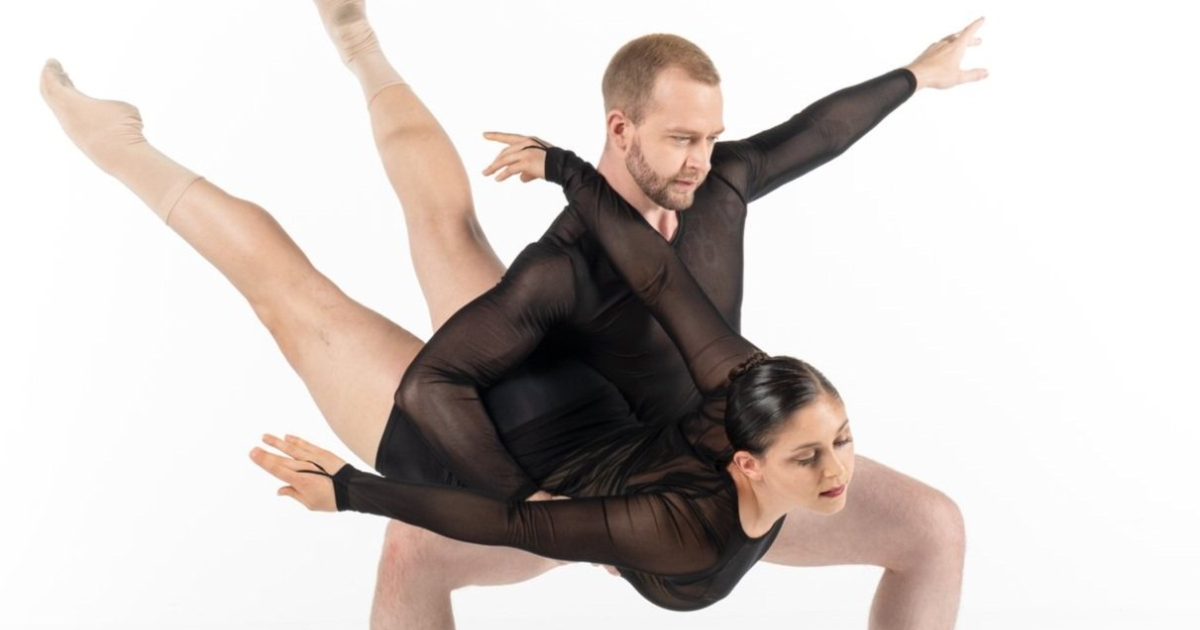Most of us who have studied American history to any degree have encountered the Triangle Shirtwaist Factory Fire of 1911 as a devastating and pivotal event that led to much-needed, fundamental change in labor laws; however, fewer of us have had the opportunity to witness that tragedy sprung to life as a gripping ballet.
Deos Contemporary Ballet offered the five-part, 40-minute ballet “Locked Doors” as the second act to their spring concert “Ember 24” at St. Cecilia's Music Center in Grand Rapids to honor Women’s History Month over the weekend. Choreographed by Artistic Director Tess Sinke and set to Dvorak, Bach, Tchaikovsky, and Schubert, among others, the dance puts on stage in exquisite detail a representation of the 146 mostly women and girls who labored on the 9th, 10th, and 11th floors of a Greenwich Village factory behind locked doors and were killed in a blaze on March 25, 1911, because they were trapped in—or leapt to their deaths from—the burning building from which they could not otherwise escape.
At the start of the piece 10 dancers recreate life on the factory floor for the shirtwaist workers, with two women sitting at sewing machines and performing repetitive motions—alternately leaning forward and outstretching an arm repeatedly—while others leap and twirl across the stage with quick steps, showing the frenetic labor and high energy of the workers.
Jenny Judd Reyes narrates the scenes with dramatic readings, largely from newspaper clippings that covered the event, and Letitia Jap plays violin on stage during the second section of the ballet wherein the lights and tone begin to change, suggesting the toil is wearing on the women as well as foreshadowing the imminent tragedy.
Knowing what’s coming makes it hard to watch; however, there is beauty amid the anticipated devastation, particularly in the romantic pas de deux between company member Isabelle Ramey and guest artist Isaac Lee full of lovely leaps and buoyant lifts. They’re well matched with wonderful chemistry that shows in their youthful playfulness and real tenderness. It sets us up to feel the heartbreak of watching them leap off the stage to their deaths, or, as the Milwaukee Journal reported it: “Together, they went into eternity.”
What follows is more melodrama. The remaining dancers make both terrible and beautiful shapes with their bodies as they frenetically leap and twirl to angsty violins and slam against walls, showing that they’re trapped in a burning building. They return, after death, covered in soot, as if the walking/dancing dead, as Reyes sings a deeply affecting “Ave Maria” a cappella.
It’s an impressive and moving accomplishment, a terrific artistic collaboration and tribute, particularly to women and immigrants, that highlights an unjust trauma that ultimately led to important social change.
The rest of the concert included a first act made up of wonderfully eclectic mix of dances that exhibited the range and talent of this company.
Former Grand Rapids Ballet dancer Isaak Aoki’s intriguing pas de deux “Drowning Sorrows and Drunken Madness for the Guqin” features Madison Massara-Leister and Leah Haggard who undulate and connect to each other as well as the floor before moving through wide plies, developpes and grand jetes in a very elegant, flash ballet. And Attila Mosolygo’s very athletic and classical pas de trois, “Brahms Trio”, reprised from Deos’s inaugural 2018 performance, showcased fine pointe work from Brie Renfrew, Lauren Hansen, and Allison Haan in this brief piece with plenty of attitudes and distinct, in tandem changes in body direction.
Two additional pieces from Tess Sinke rounded out the first act. The lovely and sad autobiographical pas de deux “Where Midnight Meets Morning” set to Brahms explores the trauma of postpartum depression. Madison Massara-Leister and Isabelle Ramey represent the light and dark of motherhood—through their movement, connection, and disconnection. And in contrast, the delightful “Leroy in Color” offers a bright, cheery, light-hearted series of high-energy, technicolor, neoclassical, en pointe pieces.
All together, the two acts are a marvelous achievement. The dances show off the talents of this promising, young company and offer an excellent diversity of styles and stories, all of which honor the experiences and achievements of women past, present, and future.
Ember 24
Deos Contemporary Ballet
March 15-17
deosballet.com





